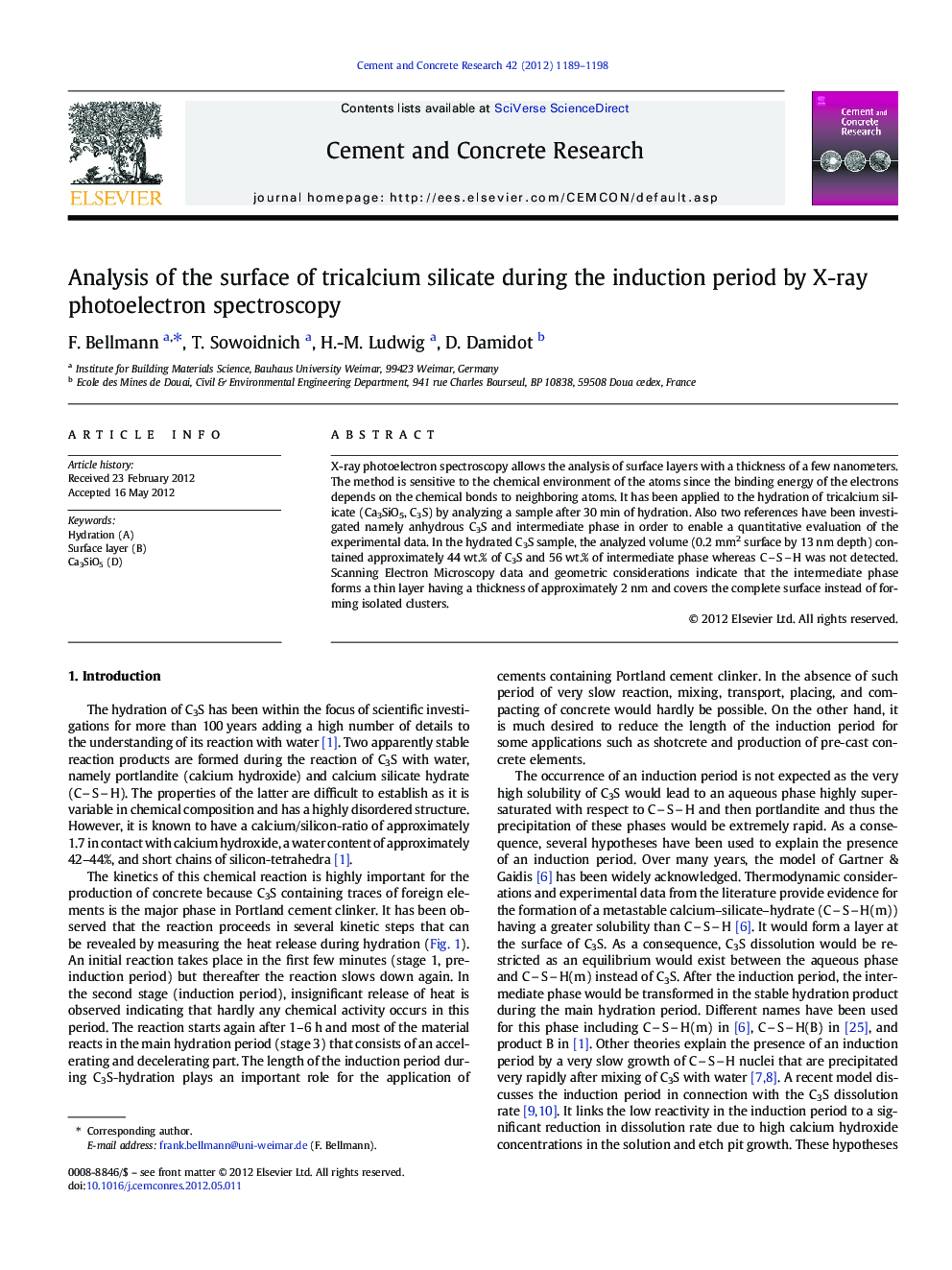| Article ID | Journal | Published Year | Pages | File Type |
|---|---|---|---|---|
| 1456554 | Cement and Concrete Research | 2012 | 10 Pages |
X-ray photoelectron spectroscopy allows the analysis of surface layers with a thickness of a few nanometers. The method is sensitive to the chemical environment of the atoms since the binding energy of the electrons depends on the chemical bonds to neighboring atoms. It has been applied to the hydration of tricalcium silicate (Ca3SiO5, C3S) by analyzing a sample after 30 min of hydration. Also two references have been investigated namely anhydrous C3S and intermediate phase in order to enable a quantitative evaluation of the experimental data. In the hydrated C3S sample, the analyzed volume (0.2 mm2 surface by 13 nm depth) contained approximately 44 wt.% of C3S and 56 wt.% of intermediate phase whereas CSH was not detected. Scanning Electron Microscopy data and geometric considerations indicate that the intermediate phase forms a thin layer having a thickness of approximately 2 nm and covers the complete surface instead of forming isolated clusters.
